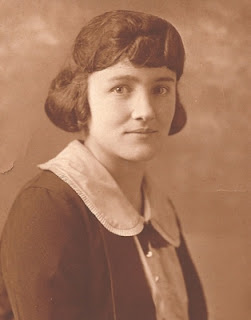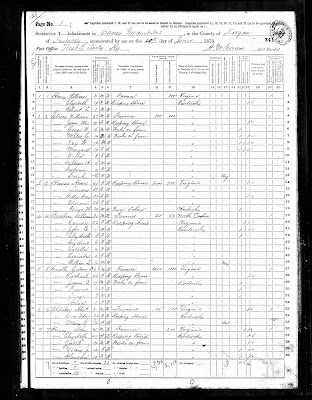On my tree I have two special ornaments. One belonged to my mother, and the other might have been Big Mom's, but more likely was one of my grandmother's. In any case, they are both at least 50 to 60 years old. Every year I wrap them up in massive wads of tissue or paper towels and place them in the very middle of my ornament box, surrounded and protected by all the other wrapped ornaments. Every year I hold my breath as I unwrap them, hoping that they are still whole and unbroken.
 |
| My mom's ornament |
 |
| My grandmother's (or Big Mom's) ornament |
I panicked a little this year when I couldn't find this next decoration. I have red and green Christmas bins that hold all my decorations and ornaments, and I went through every one of them three times, looking for the musical Christmas ball that Uncle Tom sent us from Germany when he was working there in the 1960's. I finally remembered that I had put it in its own box and tucked it away in the top of the closet last year.
It was an object of fascination in the 1960's, something from another country and emblematic of Uncle Tom's exotic life. We always hung the Christmas ball in a doorway, where there was room to pull down the wire string that made it play "Silent Night." Nowadays, I'm almost afraid that it can't withstand one more tug on the pull string, so it hangs quietly on its ornament stand.
Here is what I remember about our Christmas decorations when I was growing up.
- The mantel was always the focal point for my grandmother's Christmas decorating. The stockings hung from it; Santa Claus, poinsettias, and Christmas cards sat atop it; and my grandmother always wrote something in lipstick across the mirror.
- She always decorated around the front door with cedar branches and multi-colored lights (the big bulbs that you can hardly find anymore). When we lived at 2717 W. 42nd St., the cedar came from our own tree. After we moved in 1963, for a couple of years Mom was still able to collect cedar from the tree at the old house to decorate the front door of Big Mom's house.
- We always had a real Christmas tree. It smelled like a real tree, and it shed like a real tree. No wimpy Christmas tree stand for us! Our tree stood in a bucket of rocks and had to be watered often so it wouldn't dry out before the big day. I really don't remember the ornaments, but we had tinsel and big-bulbed lights with reflectors. I still have this tree topper that we sometimes used, but it's too sad-looking now to top my tree.
- My grandmother also put up another tree, a small silver one that Uncle Mack brought home from the shoe store where he worked as a young man. She usually decorated it with ornaments all of one color, and I remember that she often used pink. That may be where my pink Christmas ornament came from. Our television set was so big in those days (not the screen, just the cabinet) that the tree usually sat on top of the TV.
- We had a small ceramic tree with imitation pine needles and lights. I don't remember where my grandmother put it on 42nd St., but at Big Mom's house it sat in the window above the kitchen sink. One year my cousin Debbie burned her finger when she touched one of the lights.
- We always had Christmas Eve with Uncle Mack, Aunt Helene, and Debbie. Aunt Helene usually bought me something that was the desire of my heart. One year, when I was a teenager, it was two dresses from a shop at 51st & Peoria. I had tried them on during one trip to the shop, then begged for them so much that my grandmother took me back to buy them, just to find that they had already been sold. It was a big surprise when they turned up as gifts from Aunt Helene under our tree on Christmas Eve.
- Aunt Helene was also the queen of wrapping--her presents were wrapped so beautifully that you hated to open them. I could never wrap presents as beautifully as she did, but I was the designated wrapper at our house. My grandmother's arthritis made it difficult for her to handle tape and ribbon, so I took over those duties. I was such a good kid (and loved surprises so much) that she could give me my own presents to wrap and I wouldn't peek! Mostly.
The decorations I put out at Christmas help me remember wonderful times with family members that are gone. Mom, Big Mom, Aunt Helene and Uncle Mack, all my aunts and uncles, Daddy -- I hold you in my heart at Christmas time and always.
 |
| Daddy and I, Christmas 1954 -- I wish I knew what happened to this Santa! |













































